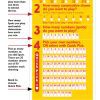Welcome to the exciting world of poker, where players bring their best poker faces and try their luck at the tables. How many people can play poker? Well, get ready to shuffle the deck and let’s find out!
Poker is a popular card game that can be played by a wide range of people, from two players enjoying a head-to-head battle to a table packed with friends or even hundreds of participants in large-scale tournaments.
Whether you’re a beginner looking to learn the ropes or a seasoned player aiming for a thrilling competition, understanding how many people can play poker is the first step to joining the action. So, let’s dive in and explore the possibilities of this timeless game!

How Many People Can Play Poker?
Poker is a popular card game that has been around for centuries. With its combination of skill, strategy, and luck, it has attracted players from all walks of life. But have you ever wondered how many people can actually play poker at once? In this article, we will explore the different variations of poker and discuss the maximum number of players for each game. So, let’s shuffle up and deal!
1. Texas Hold’em
Texas Hold’em is the most popular variant of poker played today. It is a community card game where each player is dealt two private cards and must make the best hand using their own cards and the five community cards on the table. In Texas Hold’em, the maximum number of players at a single table is typically 9 or 10. This number allows for enough cards to be dealt while still maintaining a reasonable amount of strategic depth and interaction between players.
There are variations of Texas Hold’em called “six-max” and “heads-up,” which allow for fewer players. In six-max, the maximum number of players is reduced to six, resulting in a faster-paced and more aggressive game. Heads-up is a one-on-one version of Texas Hold’em, where there are only two players involved. This format is often seen in high-stakes tournaments and provides an intense battle of wits and skill between the opponents.
2. Omaha Hi/Lo
Omaha Hi/Lo, also known as Omaha Eight-or-Better, is another popular variant of poker. In this game, each player is dealt four private cards and must make the best high and low hands using exactly two of their private cards and three of the five community cards. The maximum number of players in Omaha Hi/Lo is similar to Texas Hold’em, with most tables accommodating 9 or 10 players.
Just like Texas Hold’em, there are smaller variations of Omaha Hi/Lo. Six-max Omaha Hi/Lo allows for a maximum of six players, while heads-up Omaha Hi/Lo is a thrilling one-on-one game. These variations offer a different dynamic and strategy compared to full-table games and can be a refreshing change for players looking for new challenges.
3. Seven-Card Stud
Seven-Card Stud is an older variant of poker and was once the most popular form of the game before the rise of Texas Hold’em. In Seven-Card Stud, each player is dealt seven cards, with three being face-down and four face-up. Players must make the best five-card hand using any combination of their seven cards. The maximum number of players in Seven-Card Stud is typically 8.
With fewer players involved compared to Texas Hold’em and Omaha, Seven-Card Stud offers a different strategic landscape. The ability to see some of your opponent’s cards on the table adds an extra layer of complexity to the game. However, the reduced number of players also means less interaction and variation in gameplay, making it an ideal choice for those who prefer a slower-paced and more traditional style of poker.
4. Five-Card Draw
Five-Card Draw is one of the simplest variations of poker. In this game, each player is dealt five private cards, and there are no community cards. Players have the opportunity to discard and replace their cards through a series of betting rounds to improve their hand. Five-Card Draw is typically played with a maximum of 6 players, although it can accommodate more or fewer players depending on the table.
Due to its simplicity and ease of play, Five-Card Draw is often used as a beginner’s variant or for casual home games. The smaller player count allows for quicker games and more straightforward decision-making. While it may lack the complexity and strategic depth of other poker variations, Five-Card Draw can still provide plenty of entertainment and excitement.
5. Online Poker
In addition to traditional live poker games, online poker has become incredibly popular in recent years. Online poker platforms allow players from all over the world to compete against each other without the need for physical proximity. The beauty of online poker is that the number of players is virtually unlimited. Whether you’re playing cash games, tournaments, or sit and go’s, online poker can have tens of thousands of players participating simultaneously.
Online poker sites have seamlessly adapted to the needs of different players and offer a wide range of poker variations and formats. From micro-stakes games with a few cents at stake to high-stakes tournaments with millions of dollars on the line, there is something for everyone in the virtual poker world. The convenience, accessibility, and extensive player base of online poker have revolutionized the game and brought it into the digital age.
Benefits of Playing Poker with Different Numbers of Players
When it comes to playing poker, the number of players at the table can significantly impact the gameplay and overall experience. Here are some benefits of playing poker with different numbers of players:
1. Full Table (9-10 players)
Playing poker with a full table of 9 or 10 players allows for a more interactive and social experience. The larger number of players creates more opportunities for bluffing, reading opponents, and making strategic decisions based on their betting patterns. Additionally, the slower-paced nature of full-table games gives players more time to think and analyze the game, making it ideal for those who enjoy a more relaxed and methodical approach to poker.
2. Six-Max (6 players)
A six-max game offers a faster pace and more aggressive style of play compared to full-table games. With fewer players, the action is more concentrated, and players need to be more aggressive and adapt quickly to changing situations. Six-max is popular among players who enjoy a more dynamic and intense poker experience. It requires a higher level of skill and aggression to succeed in this format.
3. Heads-Up (2 players)
Heads-up poker is the ultimate test of poker skills. With only two players involved, every decision becomes crucial, and the psychological aspect of the game is magnified. Heads-up games require players to be exceptionally skilled in reading opponents and making accurate judgments. It is a thrilling and intense format that provides a unique and challenging poker experience.
Tips for Playing Poker with Different Numbers of Players
Regardless of the number of players at the table, here are some tips that can help improve your poker game:
1. Adapt Your Strategy
Different player counts require different strategies. Understand the dynamics of each game and adjust your play accordingly. In full-table games, focus on patience, observation, and making calculated moves. In smaller games like six-max or heads-up, be more aggressive and capitalize on opportunities to steal pots and apply pressure on your opponents.
2. Pay Attention to Position
Position is vital in poker, no matter the number of players. Being in a late position gives you a significant advantage as you have more information about your opponents’ actions before making your own decisions. Use your position wisely to make well-informed choices and gain an edge over your opponents.
3. Study and Practice
Poker is a game of skill, and the more you study and practice, the better you will become. Read books, watch videos, and analyze hands from experienced players to improve your understanding of the game. Additionally, practice regularly to develop your skills and gain valuable experience in different player count scenarios.
In conclusion, the number of people who can play poker depends on the variant being played. Intimate games with just two players, fast-paced six-max tables, or full-table games with nine or ten players all offer unique experiences and require different strategies. Whether you prefer the social aspect of playing with a larger group or the intensity of one-on-one battles, poker provides endless opportunities for entertainment and skill development. So gather your friends or log into an online poker site and enjoy the exciting world of poker!
Key Takeaways: How Many People Can Play Poker?
- Poker can be played by 2 to 10 players at a time.
- The ideal number of players for a poker game is usually 6 or 9.
- Playing with fewer than 6 players can result in fewer betting opportunities and less strategic play.
- With more than 9 players, the game can become crowded and it may take longer for each player to make their moves.
- Poker can be played with friends or at a casino, and the number of players can vary based on the available space and preferences.
Frequently Asked Questions
Curious about how many people can play poker? Look no further! Here are answers to some commonly asked questions on this topic:
1. What is the maximum number of players in a standard game of poker?
In a standard game of poker, the maximum number of players is typically 10. This ensures that there are enough cards for everyone while allowing for strategic gameplay. However, it’s important to note that the number of players may be limited by the available seating capacity at a particular table or venue.
If you have more than 10 people interested in playing, you may consider hosting a tournament-style game where players are gradually eliminated until there is one winner. This allows for a larger number of participants while still maintaining an enjoyable playing experience.
2. Can poker be played with fewer than 10 players?
Absolutely! Poker can be played with fewer than 10 players. In fact, many variations of the game, such as heads-up poker (played with only two players) or three-handed poker (played with three players), are specifically designed for smaller player counts.
Playing with fewer players can often lead to a more intense and strategic game, as players have more opportunities to analyze their opponents’ moves and adjust their own strategies accordingly. So don’t worry if you don’t have a large group of players – poker can still be a thrilling experience with just a few participants.
3. Are there any poker games that can accommodate more than 10 players?
Yes, there are poker games that can accommodate more than 10 players. One popular variant is called “multi-table tournaments,” where players are split across multiple tables and gradually consolidated as the tournament progresses. This allows for a potentially unlimited number of participants, with each table functioning as a separate mini-game.
Another option is to play “cash games” where players come and go as they please, and new players can join at any time. With this format, as long as there are enough seats available, there is no strict limit on the number of players who can participate.
4. Can poker be played with an odd number of players?
Yes, poker can be played with an odd number of players. In such cases, one player will have to act as the dealer for each hand and may also be required to post an additional forced bet known as the “dead blind” or “straddle.” This helps to ensure that there is equal opportunity and rotation among the players, even with an odd player count.
Playing with an odd number of players can add an interesting dynamic to the game, as it requires adapting to different positions and strategies depending on who is acting as the dealer in each round.
5. Can kids play poker?
Poker is traditionally considered a game for adults, as it involves betting and requires a certain level of strategic thinking. However, there are versions of poker, such as “draw poker” or “lowball,” that can be played as family-friendly games, where the focus is more on the fun and social aspects rather than gambling.
When playing poker with kids, it’s important to adapt the rules and stakes to ensure it’s age-appropriate and promote responsible gaming. Emphasize the importance of understanding the rules, practicing good sportsmanship, and playing for enjoyment rather than for money.
How to Play Poker
Summary
So, how many people can play poker? Well, it depends on the type of poker game. In Texas Hold’em, the most popular version, up to 10 players can play at a time. But in some other variations, like Seven Card Stud, only 8 players can participate. So, the number of players can vary depending on the game being played.
However, if you have more people interested in playing, you can always play in multiple tables or set up a tournament format. That way, everyone can join in on the poker fun. Just make sure to follow the rules of the game and enjoy the excitement of playing with friends and family!









